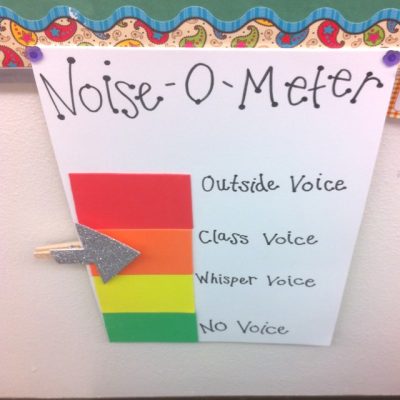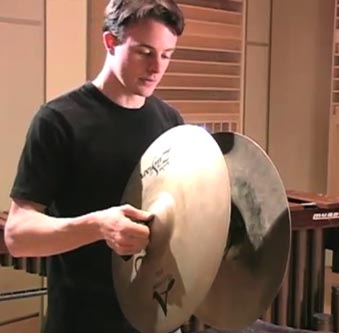Let’s make the distinction early on about what we are looking at – in this article we are not looking at poor behaviour or misbehaving classes; we are not really even looking at direct behaviour management strategies… so what are we looking at?
In this article we are going to look into :
Getting the attention of the class when you need it – how do you interrupt what is happening to speak or demonstrate something to the whole class.
In class we cover so many areas of the curriculum that we have to plan and teach in many different ways. Some of these methods are listed below:
- Children listen and may interact as you teach
- Children are given set written tasks to complete
- Practical lessons such as Art or P.E
- Practical investigations connected to learning objectives
- Research and group project work
I am sure you can think of more!
In this vast mix of teaching opportunities there are times of quiet study and also times when levels of noise are allowable (sometimes you may even have to warn colleagues next door what you are doing in advance!)
But whatever the nature of the activity, there are occasions when, as a teacher, you wish to intervene in proceedings and “have a word.”
Of course when everything is quiet it is very easy to do – but at the times when the activity has some volume or even when the noise level in class has risen inappropriately; just what are the ways that we can get things back in line?

Let’s look at this in a wider scope – this element of class control is part and parcel of your classroom management strategy. It can overlap slightly with behaviour management and this will vary depending on the nature of your class. But in its simplest form (which we are considering here) it is very much an element of you classroom management strategy and needs to be included as such from the first day of the Autumn term.
So just what are the approaches you can use to “rise above the noise” and have your class settle quickly and quietly.
What NOT to do:
- Shout! This is definitely the wrong thing to do and is counter-productive in both the short term and long term. You should not need to shout to be heard over the noise level in your class. If this is the case then there are 2 questions I would ask….
- Should the noise level be that high ( maybe yes!)
- If the level is inappropriate then why have you not intervened prior to the situation and I am sure you have told the class what the acceptable level of noise will be for the activity. There are various ways this is done by colleagues but this is not the focus for us here.

Bang on a desk or make a loud noise: Again counter productive and doesn’t really create a good atmosphere in your class.
With both the above, you as the teacher, are aiming to make an even bigger noise to get the children’s attention and to be honest it doesn’t really work and it certainly does NOT encourage a calm and caring atmosphere in the classroom.
So what are some of the techniques that colleagues use to get the children’s attention and quieten things down?
Chime bars: – Many teachers have a chime bar on their desk and when they wish the children to stop and listen they hit the chime bar. The level of the noise created is not high but the note frequency cuts through the class noise level and can be heard by the children. Its a simple and easy option to use and all you have to do is pinch a chime bar from the music room!

But what if the children don’t really respond to the chime bar…do you hit is again but louder?
What if the children get used to the chime bar and it’s not working – should we upgrade the instrument?

or even further still……

Now we’re talking !!!
Counting backwards: A well used technique by many colleagues although has to be done in a voice loud enough for everyone to hear. The usual countdown is from 5 although I have heard various starting points used depending on how confident the member of staff is with the class. Of course it always prompts these questions
- The children know they needn’t stop until the count is nearly ending
- What do you do if the class doesn’t quieten at the last number – or do you throw in 3/4’s…1/2’s…1/4’s just to spin out the time?
Perhaps the longest count I have heard has been backwards from 20…..”what can I say!”

Putting up your hand and waiting: This can be used in various scenario’s from playgrounds to classrooms. The basis of this is that the teacher puts up their hand and stands still. As the children see this they also put up their hands and are quiet (and stand still if this is done in the playground). It’s the ripple effect and as children see others doing this then they follow.
Positives: There is no need to battle against the noise level – all children should know what to do and its a simple and silent instruction for them.
Negatives: It can take a little time on occasion until the ripple effect occurs and teachers may then also need to speak to hurry things along.
There are many other methods, I am sure, that aim to achieve the same result, from computer timers on the board to “App” noise level meters – but the underlying principle and aim is always the same.
Whichever method you choose has to be effective – by effective I mean that it should not involve you REPEATEDLY having to ask for quiet so that you can speak. It should not involve you having to raise your voice to a noise level ABOVE that in the classroom to be heard. If this has to happen then your approach is not effective enough in its implementation.
Mid lesson stoppage: If you have a busy lesson going on (art / craft) and you wish to stop at any point then you can simply intervene by whatever method you use and tell the children just to stand still and listen for a minute. Let them know what it is you wish to say and then let them carry on….in this instance don’t wait for the children to wind down…hurry them along and let them know its only a quick stop.
For more major input: You will need to use your chosen method and ensure everybody is in their seats, quiet and listening.
There is another element, however that comes into play here – and that is the attitude of the pupils. You as the teacher would like your class to stop what they are doing and quickly become quiet to listen to what you have to say. But what incentive do they have to “quickly” carry out this instruction? Many classes will just slowly wind down the noise level and whatever they are doing whilst you as the teacher make repeated and often louder requests for this.
At this point it is not the selected method that is at fault it is the procedures that back this up that are either failing or not in place.

Put bluntly – there has to be a reason for the children to want to settle quickly…and most times they won’t be bothered in doing this!
This is where we overlap with the class behaviour management procedures and this ensures that the children are aware of consequences that may follow by not settling quickly.
What’s the approach? I have to say I never used a chime bar and in all my years of teaching have never counted backwards. I only ask once for quiet in my classes – its loud enough for everyone to hear and I may clap my hands at the same time. If I am sitting at my desk and wish a little more emphasis I may stand up at the front of the class to ask this.
If the class is quietening down quickly I will say “thank you” and may well address 1 or 2 children individually by saying ” come on Sally (or whoever) don’t hold us up”. I always thank the class when they are quiet and often congratulate them for how quickly it was done.
However there are times when the class decides to drag its feet – I never repeat the request!
I had on my desk a stopclock timer and I would simply go back to my chair …start the clock and sit down and say nothing.
The ripple effect was very swift – the word went round very quickly that the clock had started and the whole class knew that the time recorded came off the playtime and was extended lesson time!

This eliminated the drag and reluctance to the settling down time by the class and allowed me as the teacher to …
- Avoid having to raise my voice or make loud intrusions
- Transfer the impetus to the children to follow the instructions
- Avoid wasting time and energy!
Chatty classes are usually good natured and reflect a happy atmosphere in your classroom – but as with all things there is a time and place for everything. Having the ability to pull your class together quickly and quietly is a great asset to have in your “teachers armoury” – it doesn’t happen by itself but its certainly worth working towards.
Charles


